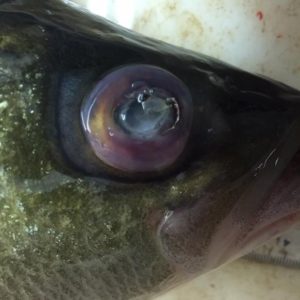Since starting the Aquatic Diagnostic Laboratory (ADL) blog series, many County Extension offices have shared our information each month to provide pond owners with necessary information. This month seemed like a better time than ever to go over the ADL’s background and how we might stack up against other laboratories.
In 2015, the ADL was founded by the Aquaculture Extension Specialist and ADL Director, Dr. Todd Sink, to fill the need for an in-state fish disease diagnostics laboratory following the closure of the Texas Veterinary Medical Diagnostic Laboratory’s fish pathology program in the 1990s and the creation of USDA veterinary feed directive in 2017. Both of these changes hindered producers’ ability to obtain a timely diagnosis and treatment recommendations, along with a heftier price tag. Compared to out of state laboratories, the ADL was designed to work with local vets and perform at-cost analysis, diagnostics, and non-biased recommendations for producers and recreational pond owners of Texas.
The ADL offers parasite screening, identification, and treatment services and fish pathology services including bacterial pathogen isolation, identification, and recommendation of FDA-approved treatments. The ADL offers a broad spectrum of water quality and waterborne toxin analyses, and water quality analyses has become much more of a focus since Brittany Chesser joined the ADL as the Lead Diagnostic Scientist in early 2019.
The ADL recognizes that rapid diagnostics and recommendations provide Texas stakeholders with the best possible management options when faced with disease or contamination in their ponds. A positive confirmation of a bacterial pathogen can be accomplished just 3 days from the time a sick fish is found, reducing the total amount of infected fish and total loss producers or pond owners could face.
One question we are often asked are how do our water quality analyses differ from those of the TAMU Soils, Water, and Forage Testing Laboratory (SWFTL). The answer is simple, the ADL water analyses are completely geared to determining the suitability of water to support fish and develop a fishery. Therefore, our analyses differ in the chemical parameters that are measure by the SWFTL, include tests that are extremely important for fish that are not included in a basic SWFTL water analyses, and each report comes with advice on the suitability of the water to support a fishery and any amendments that should be done to the water to support a fishery. The ADL also offers a wide range of waterborne toxin and environmental contamination testing that can aid in determine the cause of fish kills or contamination issues. If a water sample is not specifically for determining the suitability of water to support a fishery or to determine the cause of a fish kill or suspected environmental contamination, then it should continue to go to the SWFTL. The ADL also does not do any soil testing for clay content or suitability of soil for pond construction, so all soil samples should go to the SWFTL.
Although the lab was not publicly advertised until 2018, over the past 5 years, the ADL has delivered on its primary mission through assisting over 250 stakeholders of Texas, saving approximately 1,870,000 fish valued at $5.61 million. Even though each year the lab continues to have increased cases, many pond owners statewide do not know of the lab or how the lab may differ from other labs. We hope this helps clear things up!


